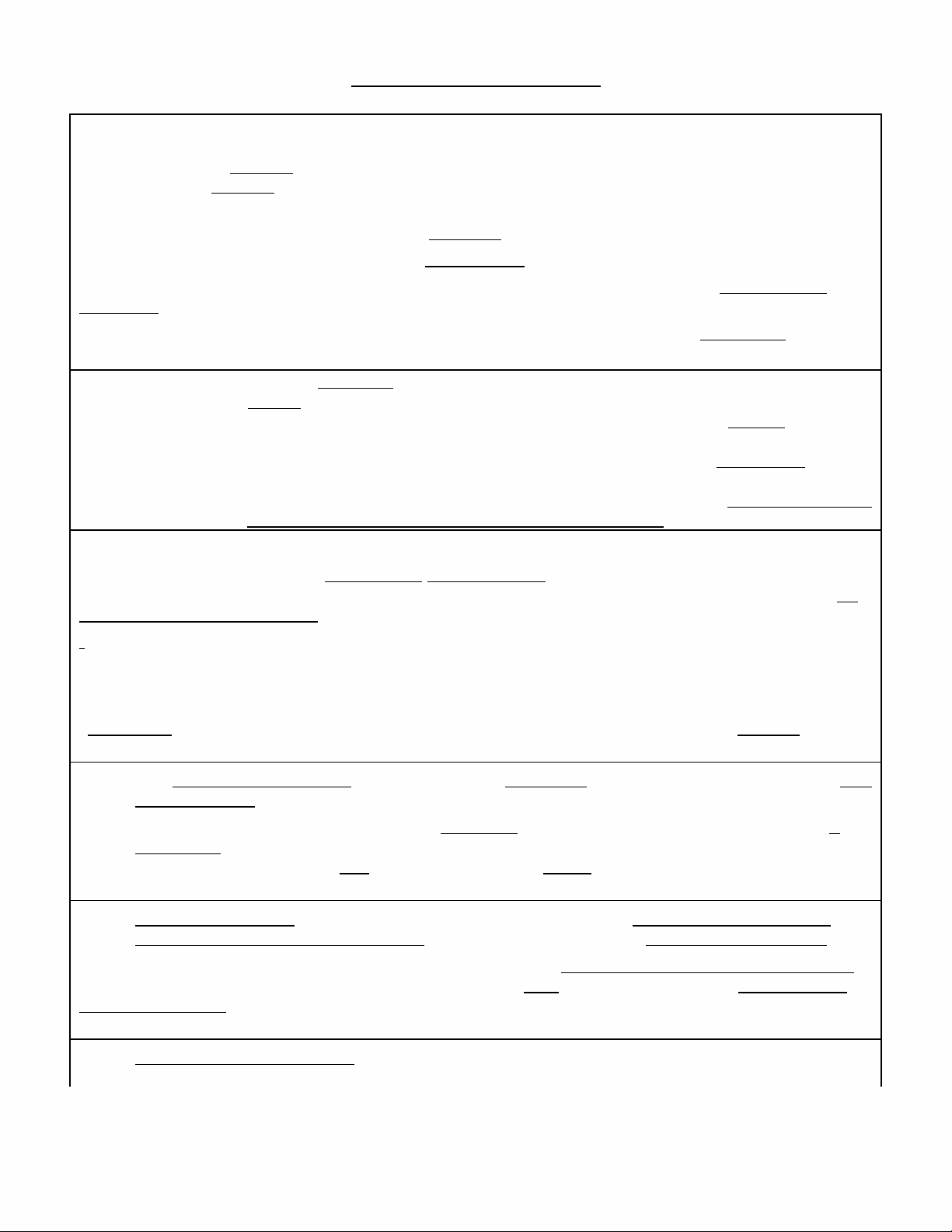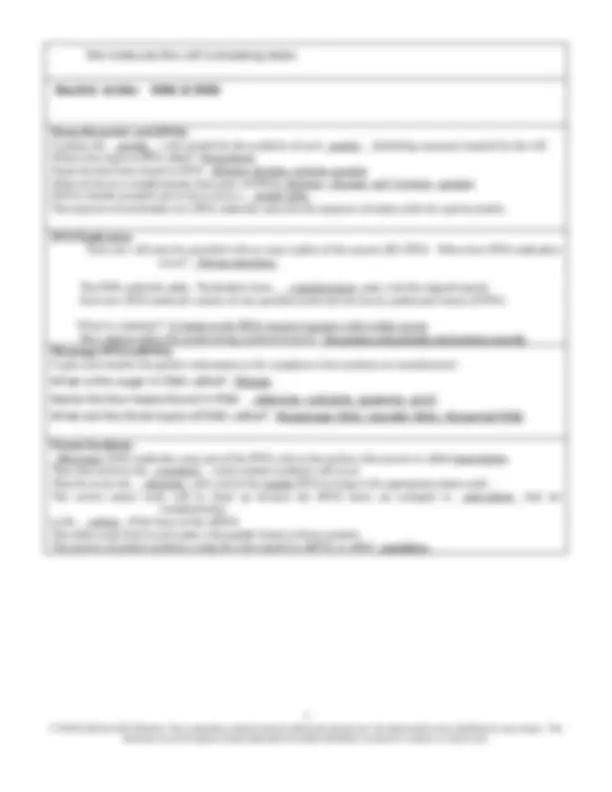



Study with the several resources on Docsity

Earn points by helping other students or get them with a premium plan


Prepare for your exams
Study with the several resources on Docsity

Earn points to download
Earn points by helping other students or get them with a premium plan
Community
Ask the community for help and clear up your study doubts
Discover the best universities in your country according to Docsity users
Free resources
Download our free guides on studying techniques, anxiety management strategies, and thesis advice from Docsity tutors
Study guide for Biol 2401 - 2024
Typology: Exercises
1 / 2

This page cannot be seen from the preview
Don't miss anything!


Metabolism: Metabolic reactions are of two types:
In __catabolic __ reactions, larger molecules are broken down into smaller ones. The reactions of metabolism are often reversible Which process requires energy? Anabolic Which process releases energy? Catabolic The process of joining two molecules by removing water is called _dehydration synthesis The process of splitting two molecule by adding water is called hydrolysis Control of metabolism: Enzymes control the rates of all the metabolic reactions of the cell Enzymes are complex proteins__that function to lower the activation energy of a reaction so it may begin. Enzymes accelerate chemical reactions.Because they do this, enzymes are called catalysts. Each enzyme is specific. The substances the enzymes act on are called ___substrates. List 3 factors that may alter the rates of enzyme-catalyzed reactions:. Concentration of enzyme, concentration of substrate, temperature Cellular Respiration ATP is the abbreviation for _adenosine triphosphate. ATP stores the energy for every chemical reaction in the body. Where exactly is this energy stored in the ATP molecule? In high energy chemical bonds Cellular respiration is the process that releases the energy in the chemical bonds of nutrients and stores it in molecules of ATP. It has 3 basic stages, each of which has several steps and is controlled by many enzymes. The first stage does not require oxygen, so it is said to be anaerobic. The other two stages require oxygen and therefore are called aerobic. The anaerobic respiration stage is called _glycolysis. Where does it take place? In the cytoplasm What chemical does it start with? Glucose What chemical does it end with? Pyruvate Are any ATPs formed? Yes If so, how many? 2 ATP Aerobic respiration has two stages. What are they called? The Citric Acid (Kreb’s) cycle and Electron transport chain Where do they occur? In the mitochondria What are the three end products of this process? Water, carbon dioxide, and energy Are any ATPs formed in aerobic respiration? Yes If so, how many? 36 or 38 per glucose molecule Lipids & protein pathways: These two nutrients can be used to make ATP. Where they enter the process and how many ATPs are formed depend on how many carbons are in © 2018 by McGraw-Hill Education. This is proprietary material solely for authorized instructor use. Not authorized for sale or distribution in any manner. This document may not be copied, scanned, duplicated, forwarded, distributed, or posted on a website, in whole or part. 1
the molecule the cell is breaking down. Nucleic Acids: DNA & RNA Deoxyribonucleic acid (DNA): Contains the genetic code needed for the synthesis of each protein_ (including enzymes) required by the cell. What is the sugar in DNA called? Deoxyribose Name the four bases found in DNA. Adenine, thymine, cytosine, guanine What are the two complementary base pairs of DNA? Adenine – thymine and Cytosine - guanine DNA is double stranded and twists to form a _double helix The sequence of nucleotides in a DNA molecule codes for the sequence of amino acids for a given protein. DNA Replication: Each new cell must be provided with an exact replica of the parent cell's DNA. When does DNA replication occur? During interphase The DNA molecule splits. Nucleotides form ___complementary_pairs with the original strands. Each new DNA molecule consists of one parental strand and one newly synthesized strand of DNA. What is a mutation? A change in the DNA sequence (genetic code) within a gene. How might it affect the protein being produced from it? The protein will probably not function correctly Messenger RNA (mRNA): Copies and transfers the genetic information to the cytoplasm where proteins are manufactured. What is the sugar in RNA called? Ribose Name the four bases found in RNA: Adenine, cytosine, guanine, uricil What are the three types of RNA called? Messenger RNA, transfer RNA, ribosomal RNA Protein Synthesis: Messenger_RNA molecules copy part of the DNA code in the nucleus; this process is called transcription. They then travel to the cytoplasm where protein synthesis will occur. They lie across the _ribosome and wait for the transfer RNA to bring in the appropriate amino acids. The correct amino acids will be lined up because the tRNA bases are arranged in anti-codons that are complementary to the _codons of the bases of the mRNA. The amino acids bind to each other with peptide bonds to form a protein. The process of protein synthesis, using the code copied by mRNA, is called translation. © 2018 by McGraw-Hill Education. This is proprietary material solely for authorized instructor use. Not authorized for sale or distribution in any manner. This document may not be copied, scanned, duplicated, forwarded, distributed, or posted on a website, in whole or part. 2